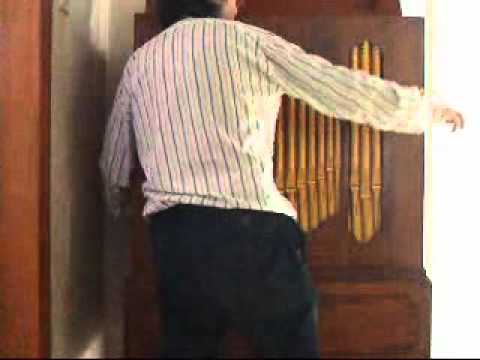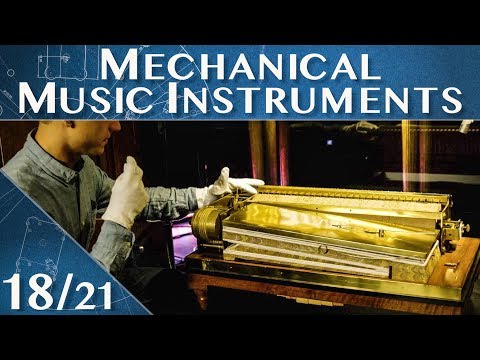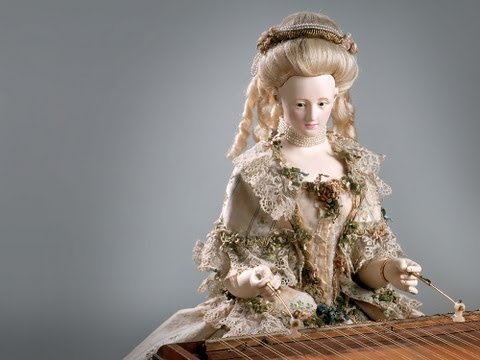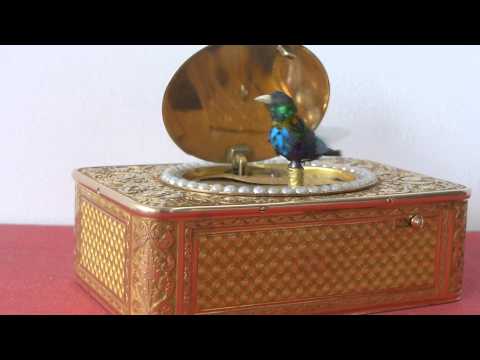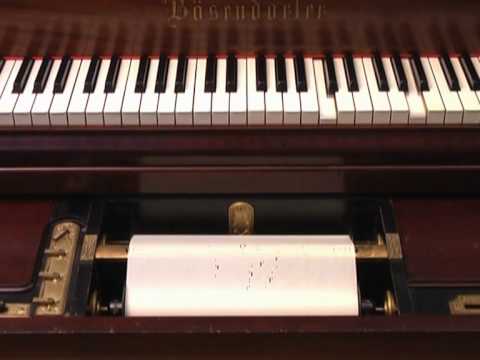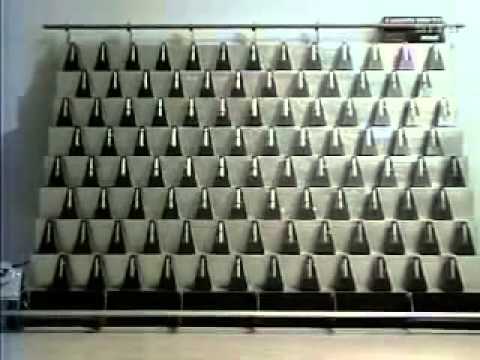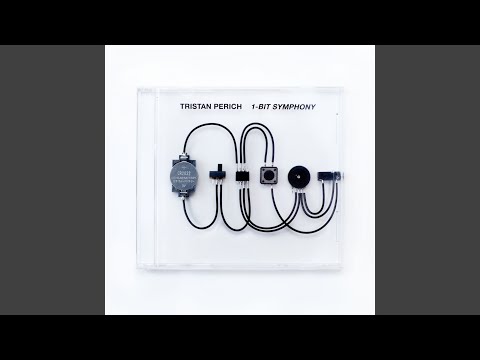The musical instruments of the concert stage are products of thousands of years of experimentation in sound; the often taken-for-granted results of a long process of tinkering. Keyboard instruments are just one example: From early string instruments to the harpsichord, the pianoforte, and the modern concert grand, the piano has been a long-term, collaborative project. The result is as much a complex machine as it is a tool of human expression.
Does such a mechanically impressive instrument really need a human player? Before the rise of the phonograph in the early 20th century, live music was simulated by water-powered clocks, whistling mechanical birds, player pianos, music boxes, and a myriad of other mechanical instruments: barrel organs, carillons, serinettes, and more. Far from being an impossibility, self-playing musical instruments have been a human preoccupation for centuries, resulting in fascinating, convoluted machines both real and imagined.
What happens when you remove the human player from a piece of music? Most automatic instruments are literally robotic, with none of the expressiveness given by a human touch. Yet they have their own charm, a plodding whimsy that creates performances that, if not human, are at least fun to watch and listen to. This playlist collects some of the most outlandish examples of mechanical instruments.
Mechanical Clocks
Probably the most familiar form of musical automaton is the musical clock. Bells and time-keeping were widely paired in Medieval European churches. But it wasn’t until the 14th century that advances in bell-founding allowed clocks in cities across what are now Belgium and the Netherlands to play small musical motifs. With mechanical hammers that struck sets of tuned bells, these new instrumental clocks became a point of civic pride for the cities and towns of the Low Countries, providing musical identities to the hours of the day. In the 17th century, these clocks were occasionally outfitted with keyboards or systems of levers that could be manipulated by a skilled player, resulting in an instrument known as the carillon.
As a highly complex mechanical apparatus that is nevertheless controlled by a human player, the carillon sits squarely in between the human and the robotic. Because the human player ultimately controls which notes are played, the carillon is still a far cry from a phonograph recording or a self-playing automaton. The instrument gained enough popularity that composers like Georg Friedrich Handel wrote pieces specifically for clock towers. Handel also wrote a series of pieces for the smaller, fully automatic clocks of Charles Clay, a clock maker for King George I who ordered one of his most elaborate creations, built over the course of 20 years, to be destroyed three days before his death. He didn’t want it to ever be finished.
The inventor Ismail Al-Jazari, who lived in present-day Turkey between 1136 and 1206, is purported to have created a water-powered automatic clock, complete with a cymbal and a robotic chirping bird, in the 12th century (Al-Jazari is still considered a father of robotics). The first automatic musical clocks in Europe were built in the late 16th century. This example from 1625 by Veit Langenbucher (1587–1631) and Samuel Bidermann and Son (1540–1622) features commedia dell’arte characters dancing against a colored background, meant to mimic a large ballroom.
Handel Barrel Organ
Automatic musical instruments can be clunky, playing the same music with the same phrasing at the same volume every time they’re activated. The barrel organ, which became popular beginning in the 17th century, is an interesting in-between. Although the instrument requires a human player to actively turn its crank, its music is encoded on a barrel using a series of raised pins that trigger the opening of pipe valves. These barrels are often interchangeable, meaning that different music can be played by the same organ. Some less-portable barrel organs also feature stops which, when opened or closed, affect the instrument’s timbre or tuning.
Part of the benefit of self-playing or mechanical instruments is that they can preserve “recordings” of older performance styles, at least in theory. A real performer of the 18th century would likely have played this piece by Handel differently, but aspects of the music encoded here—like ornaments—are useful to scholars and historical performers. In this recording, the organ grinder whimsically manipulates the tuning stops of an 18th century instrument during the performance, taking back a sliver of agency from the otherwise relentless machine.
Haydn Organ
Handel wasn’t the only famed composer to get in on the automatic music action. Father Primitivus Niemecz, a librarian, cellist, and mechanical instrument maker for the Esterházy family, was a good friend of Joseph Haydn. One of Niemecz’s most elaborate instruments, built for an Englishman in 1798, was a mechanical organ with 112 pipes that played, among other things, the overture from Mozart’s “Magic Flute” and two pieces by Haydn himself.
The most famous of Niemecz’s instruments are the so-called “Haydn Organs,” commissioned by his patron prince, Nicolaus Esterházy. They preserve over 30 pieces by the composer. These organs are on one extreme of the mechanical music spectrum: They are fully automatic, playing music with no human input after they have been wound, much like a music box. The instrument shown here was built in 1793 and features an intricate set of pins encoding a stately minuet.
Marie Antoinette
Even in the 18th century, automatic instrument makers wanted to build more than just clocks and organs. Take this striking early musical automaton, a creepy replica of Marie Antoinette, Queen of France. Her robot double plays the hammered dulcimer, or tympanon, an instrument well suited to being struck by even the clumsiest robot. Built by David Roentgen (1743-1807), this oddity was delivered to King Louis XVI in 1784, just nine years before his execution by guillotine.
As crazy as it seems, this humanoid monstrosity had its precedents. Al-Jazari is purported to have created a full robot band complete with a programmable drum machine (although none of his inventions survive). Humanoid robotic figures are a recurring theme in the world of mechanical instruments: the Trons, a robot band from New Zealand built in the late 1990s, continue to keep the dream of humanoid musical automatons alive in the present.
The latest from VAN, delivered straight to your inbox
Automatic Bird
Fully-fledged humanoid machines can take absurd amounts of time, money, and skill to create. More common among the well-to-do of the 19th century were mechanical whistling birds, another favorite motif of automatic instrument makers. In the sixth century, Hero of Alexandria is said to have created mechanical singing birds powered by water.
There’s a recurring association between birds and automatic music. Mechanical instruments were invented to teach human music to real songbirds: the serinette, a grating pin-cylinder contraption not unlike the barrel organ, was widely and successfully used to get canaries to sing the popular melodies of 18th and 19th century France. This recording is of a small 1820 model by the brothers Rochat, Swiss watchmakers and artisans whose business continues to this day.
Phonoliszt Violina
By the late 19th and early 20th centuries, some automatic instruments had become dizzyingly complex, transcending single instruments to mimic the sound of whole orchestras. Fairground organs became widespread across America as accompaniment to merry-go-rounds, while large cabinet-sized contraptions called orchestrions increasingly included simulated strings and percussion. One of the earliest of these instruments, the panharmonicon, was invented in 1805 by Johann Nepomuk Mälzel (Beethoven’s “Wellington’s Victory” was originally composed with the instrument in mind). This recording is of the titanic Phonoliszt-Violina, built by Ludwig Hupfeld in 1910 and featuring three violins, a player piano, and 900 interchangeable music rolls.
Nancarrow (1969)
In the late 1960s, scholar Charles B. Fowler claimed that at one point “the Pianola held as much educational promise as the phonograph recording.” The player piano enjoyed such widespread popularity in the early 20th century that it rivaled early recording technology, which remained an expensive and highly imperfect tool well into the middle of the century. Eventually the phonograph won out, and Fowler seems to have switched sides: emphasizing the benefit of recorded music on musical education, Fowler celebrates the phonograph’s triumph, calling it “the most effective and far-reaching ‘music educator’” of the time.
Still, the player piano retained a loyal fan base into the middle of the century, and not just for its educational merit. It was only a matter of time before someone recognized that automatic instruments didn’t have to make music that could be reproduced by humans. Conlon Nancarrow (1912-1997), an American-born composer based in Mexico, was concerned with mathematical relationships in music, particularly regarding rhythm and tempo. His music employs extremely complex tempo canons that would be unplayable by humans, but which found a ready performer in the player piano. This recording features one of his most complex pieces, from 1969, a tempo canon in 150/1605⁄7/1683⁄4/180/1871⁄2/200/210/225/240/250/2621⁄2/2811⁄4. The result of this mathematical insanity is often unexpectedly playful and silly, with a honky-tonk disposition that belies the music’s formal complexity.
Ligeti (1962)
The Hungarian composer György Ligeti (1923-2006) was a highly influential fan of Nancarrow’s. His own excursion into mechanical and automatic music was a little different. In “Poème symphonique,” from 1962, Ligeti calls for ten performers to wind up ten metronomes each, setting them off as simultaneously as possible and letting each wind-up metronome die out at its own pace. Unlike Nancarrow’s player pianos, these metronomes will never be able to reproduce a previous performance; this indeterminacy gives the piece its unfathomable rhythmic complexity. Written during Ligeti’s brief association with the Fluxus movement, “Poème symphonique” put an edge of randomness back in mechanical music, creating sounds that were of a different class than much of the rigorously composed music of Ligeti’s European contemporaries.
Tristan Perich
Although recorded and streamed music is ubiquitous in the 21st century, truly automatic, mechanical music hasn’t gone away. Artists continue to find ways to make recorded music more immediately physical and to “record” music in ways that don’t involve directly capturing audio. Tristan Perich is a living composer who has released two projects–“1-Bit Music” (2007) and “1-Bit Symphony” (2010)–for which he distributed CD boxes of built-in electronics. Within the simple circuit of “1-bit Music” is the entirety of the composition, “performed” in real time by little webs of wires in a clear plastic casing.
Perich’s music is shows that, far from being eliminated by recorded music, self-playing musical contraptions are easier to make than ever. There’s something in watching these convoluted machines stumble their way through music both familiar and unfamiliar that can be oddly endearing. Their lack of self-consciousness that would be difficult to recreate in human recordings or performances.
For centuries, people have tinkered and toiled to bring about machines that can show us music with its humanity removed. Self-playing instruments are a reminder that at the core of every great performance is a struggling, sweating, human being, a person who can’t help but give music a little piece of themselves. ¶
Subscribers keep VAN running!
VAN is proud to be an independent classical music magazine thanks to our subscribers. For just over 10 cents a day, you can enjoy unlimited access to over 875 articles in our archives—and get new ones delivered straight to your inbox each week.
Not ready to commit to a full year?
You can test-drive VAN for one month for the price of a coffee.



